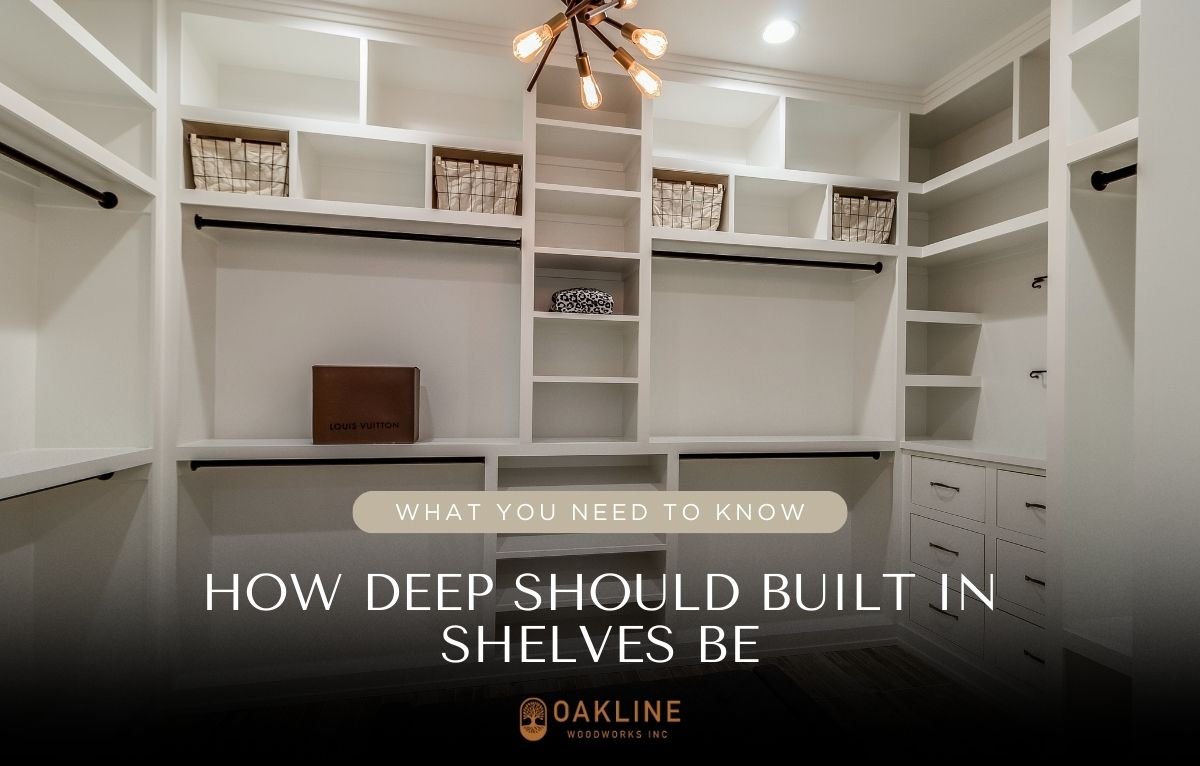
Homeowners planning custom shelving often ask: how deep should built in shelves be to balance function with design?
The answer depends on what the shelves will hold and how they integrate with the rest of the room.
Depth influences usability, appearance, and even the flow of space. Too shallow, and shelves may not provide enough storage. Too deep, and they can overwhelm the wall or make items difficult to reach.
By exploring standard guidelines and specific needs, you can determine the ideal measurement for a lasting and attractive installation.
Built-in shelves have depth ranges that are widely accepted in carpentry and design. These standards help ensure shelves are both sturdy and functional.
For most living rooms or home offices, shelves are typically:
These dimensions create shelves deep enough to be useful without overwhelming the space. For example, a 12-inch depth is often ideal for books because it accommodates most hardcovers while leaving room to style accents in front.
Deeper options can support heavier storage but should always be reinforced to handle extra weight.
While guidelines provide a helpful starting point, the actual depth should reflect how the shelves will be used. The first consideration is the scale of the room.
Shelves that are too deep can make a small room feel crowded, while shelves that are proportionate to the wall and ceiling height maintain balance.
Large, open spaces can often handle deeper shelves, while smaller rooms benefit from slimmer profiles that avoid taking up valuable square footage.
The second factor is intended use. A shallow shelf may be perfect for displaying framed photos or small art pieces, while a storage-focused design for baskets, games, or kitchenware requires more depth. Function determines dimension.
Accessibility also plays a role. A shelf that is too deep may hide items in the back, making them inconvenient to reach. Shallow designs, on the other hand, keep everything visible and easy to access.
Aesthetic style influences depth as well. Minimalist interiors often call for narrower shelves that maintain a clean, streamlined look. Traditional or farmhouse-style homes can handle more substantial, deeper shelving that emphasizes craftsmanship and presence.
Ultimately, the right depth is a combination of practical need and design preference, carefully tailored to the space it occupies.
Every home is different, and sometimes a standard measurement may not be ideal. A built-in designed for a reading nook may benefit from narrow shelves that highlight décor, while a family room with lots of storage needs might require reinforced shelves at 18 inches or deeper.
Custom solutions allow for flexibility, adapting shelving to the dimensions and character of the space.
Architectural details like alcoves, fireplaces, and window placements also play a role. Working with these features rather than against them ensures the shelves appear original to the home.
Even small variations in depth can dramatically change how cohesive the design feels. For example, matching a shelf depth to the window trim can help unify the wall, while using deeper shelving beneath allows for hidden storage.
Depth affects more than storage capacity. It also shapes how shelves visually anchor a wall. Shallow shelves can keep the look light, while deeper shelves create a sense of permanence. Achieving balance between form and function is essential.
A shelf meant to display delicate pottery might work best at 10 inches, allowing each piece to stand out without feeling crowded. In contrast, a built-in media unit designed to hold electronics may require a depth of 18 inches to accommodate wires and equipment.
Both choices are correct because they serve the intended purpose while fitting into the scale of the room.
The beauty of built-ins lies in this adaptability: shelves can be customized not only to what they hold but also to how they transform the room around them.
When building shelves at any depth, support is key. Deeper shelves hold more weight and must be anchored securely to wall studs.
Adjustable brackets, hidden supports, or reinforced framing prevent sagging over time.
Materials also matter. Hardwood or high-quality plywood resists warping, while thinner materials may not withstand heavy use at greater depths.
To ensure shelves remain sturdy and long-lasting, a few core practices should be followed:
Finishing details such as trim or molding help the shelves blend seamlessly with the surrounding architecture. Even at greater depths, shelves should feel like part of the room rather than an addition.
Careful installation ensures the shelves remain both strong and stylish for years.
So, how deep should built-in shelves be? The ideal depth usually falls between 10 and 20 inches, depending on purpose, scale, and style.
By using standard guidelines as a baseline and adapting them to your home’s needs, you can design shelves that are functional, balanced, and visually pleasing.
For homeowners seeking a tailored approach, Oakline Woodworks specializes in custom-built shelving that combines precision with craftsmanship.
Their projects are designed to reflect each home’s character, ensuring that every built-in fits seamlessly and serves a lasting purpose.